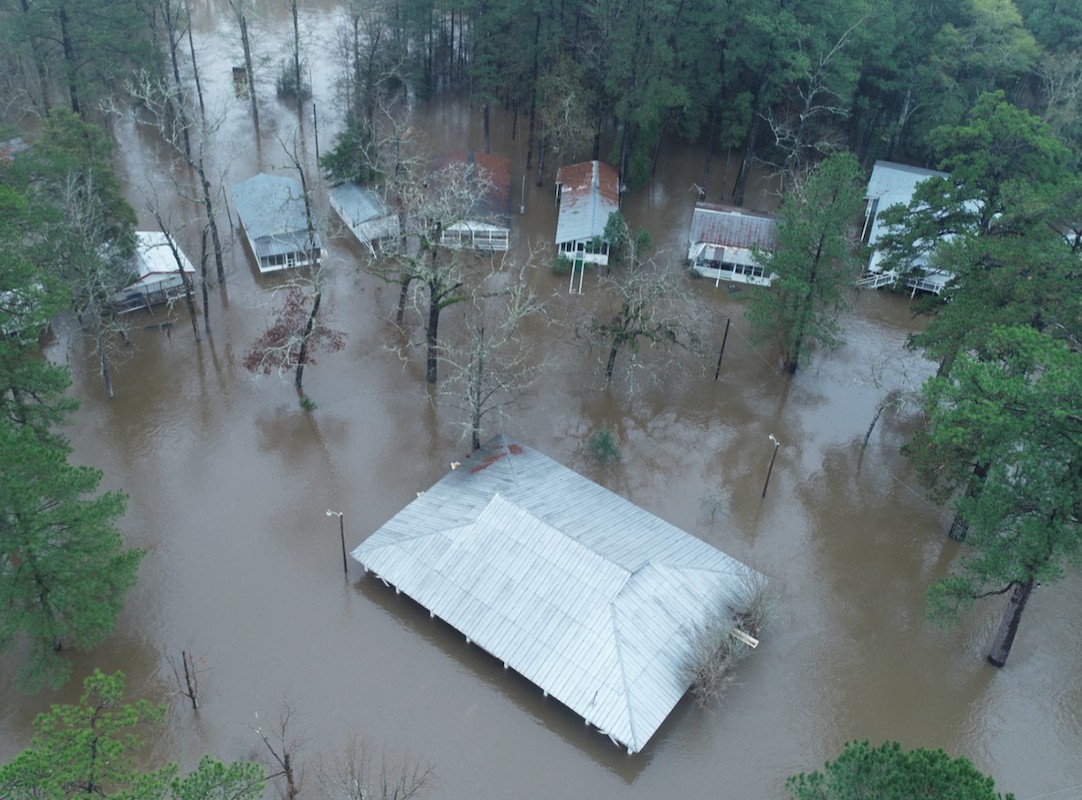While Mississippi is experiencing heavy rains and flooding right now, it’s important to know how to prepare for a flash flood and what to do if one hits your area.
Flash floods can occur within minutes or hours of a heavy rainfall, and waters can rise as high as 30 feet or more. Even small streams and creeks can flood rapidly and cause damage. Flash floods are usually caused by slow-moving thunderstorms.
According to the National Weather Service, flash floods are short-term events occurring within six hours of the causative event, (heavy rain, dam break, levee failure, rapid snowmelt and ice jams) and often within two hours of the start of high-intensity rainfall.
Flash floods can move homes and care, and can uproot trees and destroy bridges.
Almost half of all flash flood fatalities are vehicle related, according to the National Weather Service. If you’re driving and approach a water-covered road, turn around. Just six inches of water can stall a vehicle, and two feet can float most cars, trucks and SUVs.
Take these steps now before a flood occurs:
- Purchase flood insurance. You can obtain flood insurance through your insurance company. Flood insurance is guaranteed through the National Flood Insurance Program.
- Take photographs and/or videos of all your important possessions. If a flood damages your home, these items will help you file your flood insurance claim. Take these photos or videos with you if you evacuate.
- Store important documents and irreplaceable personal objects where they won’t be damaged. If a major flood is expected, consider putting these items in a storage facility.
- Plan and practice a flood evacuation route with your family.
- Have an out-of-state relative or friend serve as your family contact person, and make sure everyone in your family knows the contact person’s name, address and phone number.
- Buy and install a sump pump with backup power.
- Have an electrician raise electric components such as sockets, switches and circuit breakers at least 12 inches above your home’s projected flood elevation
- Install backflow valves or plug for your drains, toilets and sewer connections.
- Anchor fuel tanks so they will not be torn free by floodwaters.
Take these steps if floodwaters are rising:
- Fill sinks, bathtubs and jugs with clean water in case water becomes contaminated.
- Listen to a battery-operated radio for the latest storm information.
- If local authorities instruct you to turn off all utilities and close your main gas valve, do so immediately.
- If told to evacuate your home, do so immediately.
- If water starts to rise inside your house before you evacuate, retreat to the second floor, attic or your roof if necessary.
- If you come in contact with floodwater, wash your hands with soap and disinfected water. Floodwater may carry raw sewage, chemical waste and other infectious substances.
- Avoid walking through floodwater. As little as six inches of moving water can knock you off your feet.
- Never drive through a flood area or rising water.
- Avoid downed power lines because electric currents pass easily through water.
- Look out for animals, especially snakes. Animals lose their homes in floods too.
- Know your proximity to rivers, streams and dams
- During heavy rain, avoid underpasses, underground parking garages and basements
- Avoid hiking or camping if thunderstorms are predicted
- Develop an evacuation plan for your family
- Don’t walk in water above your ankles; you can be swept off your feet in as little as six inches of rushing water
- Turn off the electricity and other utilities




